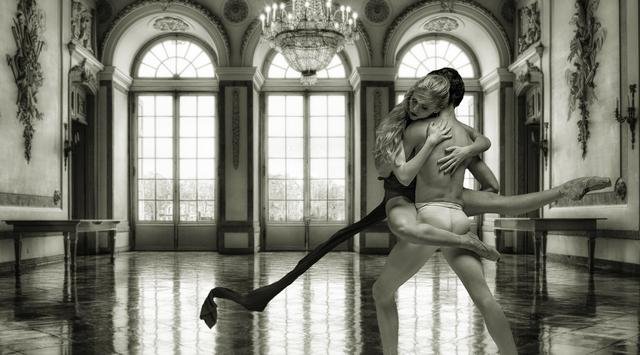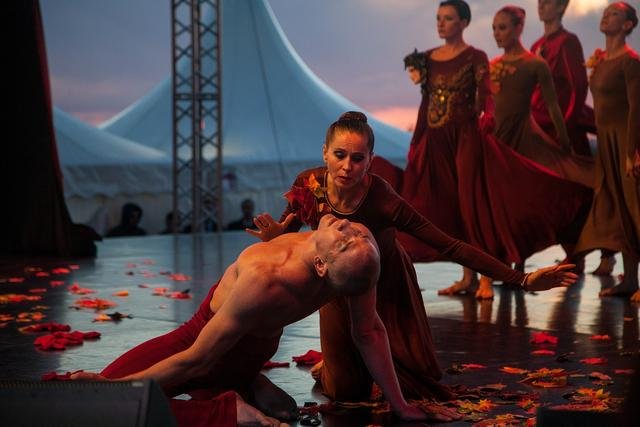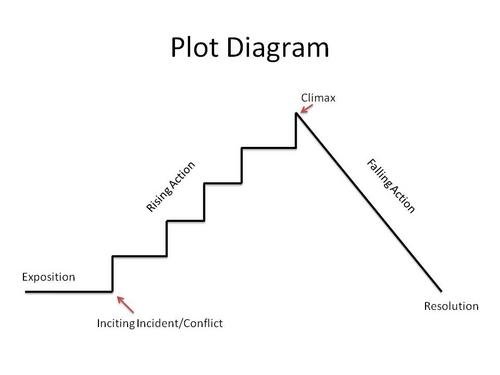As a writer there is times when an idea is present but isn’t a good fit for the standard novel form, so, I have found these ideas work best in play-script, where dialogue can move the story forward to tell an epic tell. I have found in my experience writing plays is rewarding if ever published or not. I encourage all writers to try their hand at play writing. The experience is unique and will give the writer a different perspective on their craft, and increase the writer’s overall skill.

Checklist
1. Story Development
- Plot - 1. Dramatic Arc
- Theme
- Setting
- Point of View
- Action
- Conflict
- Dialogue
- Secret
- Ending
2. Format
- Cover page/Title page
- DRAMATIS PERSONAE PAGE (The “cast of characters” page)
- Main Text Pages
- Page Numbers
- ACT AND SCENE DESIGNATIONS
- SETTING DESCRIPTIONS
- CHARACTER NAMES
- DIALOGUE
- STAGE DIRECTIONS
- CURTAIN/BLACKOUT/END DESIGNATIONS
- SIMULTANEOUS DIALOGUE
3. Audience
4. Production
- Props
- Stage Direction
- Visual
5. Dramatic Convention
6. Characters
- Relatives
- Names
- Character Arc

1. Story Development
Plot
Plot is as important in a play as is in any form of fiction. To hold the attention of the audience the plot must be clear, strong story line. Shakespeare understood this, and hundreds of years latter we still look upon Shakespeare for inspiration and standards for all great playwrights, he is one of the greatest storyteller’s of all time, able to capture the hearts of imaginations of his audience by the use of strong and clear plots.
The plot is related to what play writers call, “the dramatic question,” and it is something the audience wants answered, and keeps the audience interested enough to come back after intermissions. The plot and the dramatic question does not have to be complex, it can be simple, but what ever it is it must hold the audience attention. A good way to structure plot is to ask the question on stage, and it becomes easier to structure plot around it. After the question is asked imagine all the details and things that could prevent the main character from his goals or journey, etc, and make it more difficult to achieve. Invent characters and obstacles to cling to the story line of the plot/dramatic question.
Note: I often use this same technique when writing fiction, I ask a question and then structure around it.
Dramatic Arc
Dramatic Arc is the chronological construction of the plot, and it is divided into five acts, it is also known as the Narrative arc:
- Exposition: The introduction the story. Introduce characters and setting.
- Rising Action: Create rise in action by creating suspense that complicate matters for the main character.
- Climax: Turning point of rising action to falling action by creating the point of greatest tension in the story.
- Falling Action: A release of tension in the story’s plot by unfolding of events leading to the resolution.
- Resolution: The end of the story. Problems are resolved and of the main character are resolved.
The Dramatic Structure Can Be Applied In Multiple Formats:
- Five Act Structure
- Three Act Structure
- One Act Structure
- Novels
- Short Stories
- Etc
The Dramatic Structure Chart
Note: Experiment with structure to create imaginative and unique storyline, one way to do this is by creating a flow chart of the highlights in the narrative by using the above chart as an example.
Different types of structure
- Five-act structureThee-act structure
- Surrealistic structure
- Episodic structure
- Naturalistic Structure:
- Classical Structure:
- Surreal structure:
- Episodic Structure:
Note: Above are a few examples of different structures to consider when writing your play. It is important to note that the Dramatic Arc can work in any form of structure. There is no rule saying that a writer has to use all parts of the Dramatic Arc, it is up to you if use all or none of the dynamic Arc.
Theme
The theme is the overall idea the play write expresses to the audience. It is the deeper meaning revealed trough the overall plot and structure. Theme is important in any form of fiction. Do not undervalue theme. Every great play has a theme.
Common Themes
- Death
- Knowledge
- Love
- Danger
- Power
- Loneliness
- Etc.
Note: Theme helps to find the proper tone to fit the play. Through the use of theme the play write can control the overall abstract idea that lies hidden in the work. Remember, theme is the moral idea the play write is trying to convey to the audience.
Setting
Setting is the time frame and where your play place. Setting is simple, but it is an important as any other aspect of a play. Imagine Hamlet taking place in the future during Star Trek times, it wouldn’t work. Setting is critical and do not overlook its value.
Setting in a play is not the same as in novel or short fiction, where the writer can devote several paragraphs or even pages to explain the setting, in a playwright the author must give indication of the setting the way it will appear to the audience.
Two Aspects to Consider:
- Where does the story take place?
- When does the story take place?
Character and Setting Relationship
Each part of the setting description should represent the past and present experiences of the plays main character, even though this not a rule. In the end it is up to you to establish the setting.
Note: Developing the right setting is essential to creating a play, and before writing your play, asks yourself, “is this the best way to tell the story?” If the answer is no or your not sure, perhaps it is best to consider another format such a novel, short story, etc. Not all stories are meant to be plays, and not all plays meant to be novels, etc. Hamlet and Romeo and Juliet are great plays that stand the test of time, but as novels I don’t think it would have worked. It is this reason why some great novels aren’t as good in movie form.
Character and Setting Relationship
Each part of the setting description should represent the past and present experiences of the plays main character, even though this not a rule. In the end it is up to you to establish the setting. It is a good idea in setting description that there is symbolism connected to the character, and that the set description and set pieces provide several metaphoric and symbolic clues.
Setting Locations
- Single location: Setting takes place in one location. Characters gather and the action unfolds in a single location without the need for multiple scenes changes. The motto is, “Bring the Action to the Setting.”
- Multiple Locations: Setting takes place in multiple locations. Characters and action unfolds using multiple scenes and locations. It is important not to get carried away and creating too many scenes and set changes. Try to narrow down as few scenes as possible.
Few Things to Consider when Establishing Location
- Culture – Beliefs, Customs, Values, Society.
- Locations – Rural, Village, Town, City, Etc.
- Time Frame – Past, present, Future.
- Material Environment – Cars, Alcohol, Weapons, Etc.
Setting Terminology
- At Rise Description: A stage direction at the beginning of an act or a scene that describes what is on stage literally at rise of the curtain.
- Suggested Setting: A setting on stage in which a few set pieces or lighting or other technical elements take the place of elaborate set construction.
- Treatment: A scene by scene description of a screenplay, minus all or most of the dialogue.
- Synopsis: A two or three page description of a screenplay.
- Logline: A "25 words or less" description of a screenplay.
Note: Above is just a brief description on setting, use it to better understand its importance and to inspire you to research and learn. Setting is one of the most overlooked aspects in any form fiction. There is a balance that must be united between description and imagination. Too much description will make the work boring, and to less description won’t spark the imagination in the audience. There is no definite guide, each story and play is different, and all require different amounts of description. It is up to you. I have found from my experience when I think I have described the setting enough I have probably describe too much, but that is Ok, I can fix it during the second draft.
Setting is crucial and must represent the story as a whole. Setting is a foundation that characters can express and perform, and the foundation for action to unfold. I stress do not overlook setting, it is a must, even though it is a simple concept its importance mandatory.
Point of View
Point of view is the method the author chooses to tell the story, and it is determined by who the main character is. The story will be told through the character point of view that the audience will watch the plot unfold. The point of view can also be told through the narrator, but understand if you do lead the audience through the play of a narrator that doesn’t mean point of view is through the narrator.
Keep in mind that once you established the main point of view it is important to stay with that character most of the time. But, point of view can change as the play progress, and can change back and forth, just make sure you are not head-hopping. Head-hopping is a sign of an amateur. The best way to change points of view is by acts, intermissions, etc.
Definition of Point of View
- In fiction point of view is the narrator’s position in the description of events.
Why Point of View matters
Everything in your story from plot, story structure, theme, etc, is filtered through point of view, and if you don’t have a solid foundation on point of view in your play the audience will realize something is wrong. The biggest mistakes of new writers is point of view, often hopping from character to character, it is called Head Hopping, and most of time these mistakes are avoidable. Through study and little bit of knowledge you can take you play to the next level.
4 Most Common Points of View
- First person: First Person is when the main character is telling the story. You will see words such as, I, me, mine. It can also include words such as, us, our, and we.
- Second person: Second Person Point of View is told in the perspective of you. This style of writing is most common in instructional writing.
- Third Person Limited: Is limited to only one character, and will only know what the character knows.
- Third Person Omniscient: Narrator knows everything there is to no. God like.
Note: There are other points of views that fall under first person, second person, and third person, but the Points of View above are the most common. Do not under value point of view it is a necessity that form of writing falls under. Lear and master this element and your plays will take to the next level.
Action
Every play, story, etc., must have action, without action the play is dead. Drama is action. From the start the audience experience action, and a good way to do that is by making sure the main character wants something, and make sure somebody is keeping the main character from achieving their goal.
Conflict
The heartbeat of a play is conflict. Conflict is the driving force that creates suspense and drama. Without conflict all there is a boring jumbling of words. Beat this into your head, conflict, conflict, conflict. If you can master the art of creating great conflict the rest will follow and you will be on your way to the top. Every great writer of literature understood its value, no play or works of fiction can and will not survive without conflict.
Internal and external
To understand the value of conflict the writer must understand that it is both internal and external
- Internal Conflict: When a character struggles to choose desires.
- External Conflict: When a character struggles against another character or characters.
Note: In most plays, conflict is a combination of internal and external conflicts, and to give a heartbeat in a play the play write must be able rouse and grab and hold the attention of the audience by installing five elements of conflict.
5 elements of Conflict
- Never let the audience forgot what your Main Character wants.
- There must be struggle for the Main Character to achieve goal.
- The main character must overcome obstacles
- Make sure main character gets what he wants in the final scene or scenes, but realizes that there is something else he wants that he cannot have.
- Make audience sympathize with main Character.
Note: Understand dramatic conflict, and the five elements and it will prove invaluable in the writing process. And always remember when writing your play, that conflict is the heartbeat of a play.
Dialogue
The importance of dialogue in a play cannot be overstated, one of its primary functions is to communicate important details to the audience they would have no other way of knowing. Dialogue must move the story forward in the dramatic direction of the play, and should relate to the characters role and relate to the overall structure and theme.
A Few Things Dialogue Should Do
- Show what the Character is feeling
- Experience what the character is going through
- Reveal nature of relationships
- Reveal motivations of the character
- Reveal objectives of the character
- Reflect the plays Theme
- Move the story forward
- Dialogue should sound natural and yet poetic
Note: This is just a brief explanation on the purpose of dialogue, and its purpose cannot be overstated. Without great dialogue that moves the story forward on its spine, a play is dead. Work on creating natural dialogue so your characters can seem real and be emotionally powerful. Keep in mind in a play or any form of fiction the conversations must steer the characters toward the next conflict and drive the story forward.
Secret
People love secrets, and in a play or any form of writing it is a good idea to have the main character reveal intimate secret. It can be anything from a secret crush to something they did and ashamed off. But what ever it is make such sure that somewhere in the play you reveal secret or secrets. By employing this trick it draws the audience closer to the main character giving them a deeper involvement in the story.
Endings
Everyone hates a bad ending, and a good way to avoid a disappointing ending is to give your characters a well planned exit by leaving the stage with relevant words or actions.

2. Format
1. Cover page/Title page
2. DRAMATIS PERSONAE PAGE (The “cast of characters” page)
3. Main Text Pages
- PAGE NUMBERS
- ACT AND SCENE DESIGNATIONS
- SETTING DESCRIPTIONS
- CHARACTER NAMES
- DIALOGUE
- STAGE DIRECTIONS
- CURTAIN/BLACKOUT/END DESIGNATIONS
STAGE PLAY STANDARD FORMAT
There are three reasons why playwrights use this format:
- The Standard Format allows for easy estimation for the produce, script reader, directors, etc, to the running time of the script.
- The Standard Format allows the script to be easily read and comprehend.
- The Standard Format makes the playwright look professional giving the impression to producers, script readers, directors, etc, that you know what you are doing and know how to submit plays.
Note: The way your script looks is the first impression you make, and first impressions are important. If you submit in improper format you lose that chance of first impression and no one will take time to read your script no matter how good it is. Always remember when producers, script readers, directors, etc, receive your script and is improper format they ask themselves, “How good could the play be if the playwright doesn’t know the basics of formatting?” In the writing world first impressions are everything. Take time and study, and make sure play is standard format.
Basic Tips
- Use 8.5” x 11” white paper
- Printed (typed) on one side only
- Use black ink.
- Standard copier paper is acceptable.
- 12 Point Font: Courier
Note: Do not under no circumstance deviate from the basic format style, producers, script readers, directors, etc, what professionals only, no exceptions.
Cover page/Title page
Margin Format
- Top Margin: 3.5 inches
- Left Margin 4 inches
- Right Margin: 1 inch
- Bottom Margin: 1 inch
Format Tips
- Title of the play must be printed in all caps. 4 inches from the left side of the page 3.5 inches from the left
- Underscore line two spaces below title, Same spacing length of the title The underscore line begins 4 inches from the left side of the page
- The description line is two spaces below the underscore line, such as “A Play in Five Acts”. Only first letter of each word is capitalized
- The word “by” is two spaces below the description. The by is not capitalized
- The playwright’s name is two spaces below the word “by.” Only first letter of first and last name are capitalized
- Put the play’s copyright in the lower left hand corner of the page, at the left margin.
- Contact information in the lower right hand corner of the page. Do not put name. Playwrights name is already on page
- Do not put a page number on title page
Note: Find examples and see how the title page of plays fit together.
Dramatis Personae Page (The “cast of characters” page)
The next page after the title page is the dramatis personae page, the list of characters in the play. Take note that this page is not numbered.
Margin Format
- Top Margin: 1 inch
- Left Margin: 1.5 inches
- Right Margin: 1 inch
- Bottom margin: 1 inch
Format Tips
1. Cast of Characters is typed on top of page
- First letter of each word is capitalized, except the word “of”
- Centered
- Underlined
2. Enter the first name in your list of the characters two spaces below “Cast of Characters.”
- The character names are underlined
- Followed by a colon
- Type characters names in the left margin
3. To the right of each character’s name write a brief description of the character.
4. The next character description comes two spaces below the name of the first character.
- The Character names are underlined
- Followed by a colon
- Type Characters names in the left margin
5. The Scene and Time descriptions for the play somewhere below the character list (your choice). Note: Only if there is enough space
- Center the word “Scene,” capitalized and underline
- Write the setting (location, etc.) where your play takes place, be sure to type on the left margin two spaces below.
- Two spaces below setting (location, etc.), center the word “Time”, capitalized and underline.
- Two spaces below the word “Time” write the time period when your play takes place at the left margin, such as, past, present, future.
- Note: Type on a separate page following the Dramatis personae Page if there is not enough room for a description of scene and time
Main Text Pages
Margin Format
- Top Margin: 1 inch
- Left Margin: 1.5 inches
- Right Margin: 1 inch
- Bottom margin: 1 inch
Seven Basic Formatting Elements
- Page Numbering
- Act/Scene designations
- Setting description
- Blackout/Curtain/End designations
- Character Names
- Dialogue
- Stage Directions
PAGE NUMBERING
Take note that the first page of the play is the page on which the first scene begins. All page numbers should appear in the upper right hand corner of the page.
- Use Arabic numerals: 1, 2, 3, etc, for one act plays
- If more than one act, indicate the act number with a Roman numeral, followed by a dash, then the Arabic page number.
- If the acts are broken into separate scenes, an Arabic scene number would appear between the Roman numeral act number and Arabic page number. Example: Act One, Scene Two, Page 44 would look like this: I-2-44
- Page numbers should remain consistent through your entire script. Do not start over again with Arabic page numeral 1 at the beginning of a new act or scene.
ACT AND SCENE DESIGNATIONS
- Each new act and scene start at the top margin of a new page.
- Indent 4 inches from the left edge of the page.
- Act designation is all caps, and is underscored.
- Double-space below this comes the scene designation, if your play is subdivided into scenes: this, too, is indented 4 inches from the left edge of the page. It is also underscored, but it is NOT in caps.
SETTING DESCRIPTIONS
- Setting Descriptions on the first page and is double spaced below the Act 1 and Scene 1 designations.
- The word “Setting” is all caps and is on the left margin of the page followed by a colon.
- A description of the set should appear 4 inches from the left of the page on the same line. Remember, setting refers to the way the stage setting will appear to the audience.
- The At Rise description is double spaced below the setting description.
- Use same format as the Setting for the At Rise.
- The word At Rise is all caps on the left margin of page and followed by a colon.
- On the same line, 4 inches from the left edge of the page, there is a description of the situation or activity that is taking place as the play begins.
CHARACTER NAMES
- Character names are in all caps and indented 4 inches from the left edge of the page.
- The next line after a character name is either dialogue or a brief stage direction if needed.
- A dialogue or a brief stage direction is on the next line after a character name.
Note: Look at script examples to get an idea.
DIALOGUE
- Dialogue is the only aspect of a script that will run from the left margin to the right margin.
- Don’t right indent the dialogue text.
- Don’t hyphenate words that are not spelled with a hyphen... move that word down to the next line.
- If a word is not spelled with a hyphen do not hyphen the word, instead move the word to the next line.
SIMULTANEOUS DIALOGUE
- Both character names and their dialogue are written on the same line when two characters speak at the same time.
- The length of the characters speech or speeches will determine how you format it.
STAGE DIRECTIONS
- Stage directions are in parentheses, 2.75 inches from the left edge of the page.
- Each line of stage directions on the page should not extend past 2.5 inches over the margin.
- Capitalize character names in stage directions.
CURTAIN/BLACKOUT/END DESIGNATIONS
- The Blackout or Curtain designation is double spaced below the end of the scene.
- The Blackout or Curtain designation is indented 4 inches from the left edge of the page.
- The Blackout or Curtain designation is typed in all caps and appears in parentheses and double space below this designation and use the same style to write (END OF SCENE) or (END OF ACT)

3. Audience
Your goal as a playwright is to write a play that pleases the audience. Think of the audience as a consumer of a product, if the play is good the audience will congratulate and come back for more, if not the audience will boo and never touch the product again. And when the audience enjoys the play it encourages the playwright, actors, and the creative team to more involved, and soon learn audience kind of in a way gives permission to the performance art. There is nothing more encouraging in the art world than appreciation and applause from the audience. Only through an audience can any form of art be enjoyed by others.
Feedback
One the best benefits of an audience is feedback; they will tell you what is bad and what is good. What they support and don’t support.
Audience Feedback
- What needs improving
- What to keep in the play
- What they support and don’t support
Benefits of Positive Feedback
- Motivation
- Influence
- Support
Note: The audience is important for many different reasons, but most important is motivation.
People go to play mainly for one reason, to escape everyday life by being entertained. This escape gives people a break and for a moment forgets the headaches of everyday life. People love to be entertained, and in order for the play to be successful it must engage the audience, just giving just enough detail to let their imaginations soar. In fact most scholars agree a play can only achieve its full potential in the presence of an audience. Only through the audience can meaning be given, to connect with and make a lasting impression.

4. Production
Production
- Props Stage
- Direction The
- Big Three: Playwright - Producer - Director
It takes a people (Creative Team) to create a theatrical production to be performed in front of an audience. The people who make up the Creative Team must respect each other, each having their own talents and abilities. When people respect and work well together there will be a strong since of teamwork, and the production will be accomplished.
Signs of a Excellent Creative Team
- Each person has their own talent
- Dedication from team members
- Team members enjoy the work
- Team members work well with each other
- Respect each other Talents
- Respect each other abilities
Note: There are other signs of an excellent creative team, and if the all six of the signs listed above is seen than it is a good indicator there is a strong sense of teamwork, and a work of art is being created.
Props
Often new writers overlook the effectiveness of props. Props are visual messages to the audience, and are extensions to the characters personality. Make the props not only extension of a characters personality, but also development of the play. Think of classic plays like Hamlet, and consider when Hamlet speaks to the skull of Yorick, or in Othello and how he uses a handkerchief as proof of his suspicions of Desdemona’s infidelity, and it is hard to imagine these classic plays without the props.
Stage Direction
Stage directions are instructions in text for the actors to follow, such as, when to enter, exit, etc, and instructions for the stage crew to follow, such as, when to fade the light, close the curtain, etc, and all plays have stage directions in the script to some degree.
Note: Stage directions are written from the actor’s perspective facing the audience, known as downstage.
- Downstage: Facing the audience
- Upstage: Rear-stage, behind actor
- Stage Right: Right side of actor
- Stage left: left of actor
A few Functions of Stage Directions
- Help actors situate themselves on stage
- Where to set and stand
- When exit and enter
- How character behaves mentally
- How character behave physically
- Emotional tone
- Lighting
- Music and sound effects
- Etc
Stage Direction Abbreviations
- C: Center
- D: Downstage
- DR: Downstage Right
- DRC: Downstage Right Center
- DC: Downstage Center
- DLC: Downstage Left Center
- DL: Downstage Left
- R: Right
- RC: Right Center
- L: Left
- LC: Left Center:
- U: Upstage
- UR: Upstage Right
- URC: Upstage Right Center
- UC: Upstage Center
- ULC: Upstage Left Center
- UL: Upstage Left
The Big Three
- Playwright
- Producer
- Director
The big three must work together to decide and outline the tasks to be performed by the actors and creative team and to set deadlines that are reasonable, and who is responsible for each task required for production of the play.
Note: Have written agreements with each member of the creative Team, and each written agreement should outline duties they are expected to complete, so no one can point fingers and blame other people if something doesn’t get done by the deadline.
Playwright
The playwright is the creator and owner of the work. The beauty of being the playwright is that no one can make changes to your script without the playwright’s permission, such as, no changes in dialogue, cut or add scenes, change beginnings or endings. The Playwright owns the copyright, by anyone copying the script or makes changes the Playwright can sue the other party in violation of copyright.
Producer
The Producer is the person who brings the entire project together, in other words the producer is in charge of bringing the play from script to a live performance on stage. The Producer supervises the whole creative effort, and manages the business side of the play.
Some Aspects the Producer Is Responsible for:
- Raising Money
- Over seeing the money – bills, salaries, royalties, investors
- Obtaining rights to the script and any music involved
- Booking
- Hiring qualified staff – Managers, ushers, janitors, business staff
- Director
- designers
- Cast
- Publicity
- Schedules and deadlines
Note: The producer can delegate work task to other team members, but in the end the producer has the final say to everything from first rehearsal to closing night, other than making changes to the Playwrights script, unless other wise stated in the Playwrights contract.
Director
The director is the person who successfully gets the Playwrights work from script to a live performance. Most of the time the director has says so over the artist production, by conferring with the producer and playwright. In other words the Director is responsible for the artistic success of a play.
Some Aspects the Director Is Responsible for:
- Unified vision of finale artist product
- Organize the artist vision
- Work with Playwright
- Designers
- Technicians
- Rehearsals
- Analyze script
- Interpret meaning
- Structure the play
- Listen to ideas
Note: The director’s job is to bring the Playwrights script to life, and when opening night comes the director’s job is finished. The director is responsible to bring artist touch in the play to convey the overall meaning in an entertaining way.

5. Dramatic Convention
Dramatic conventions are actions and techniques employed to create a desired dramatic effect and style. It is a set of rules and the actors, director, and audience are familiar with. All plays have some form of dramatic convention to signify the nature of the action or of a character.
Dramatic conventions can be categorized into groups:
- Rehearsal - hot seating, role on the wall, still images
- Technical - lighting, dialogue, monologue, set, costuming and entrances/exits
- Theatrical - split focus, flashback/flash-forward, narration, soliloquy spoken thought.
List of 8 Dramatic Conventions
- The Fourth Wall: A convention in which an invisible imagined wall separates actors from the audience. The actors act as if they cannot see through the wall, and audience can
- Flashbacks and Flash-Forwards: Actor, scenes, etc, moves back and forth through time to convey themes, meaning, and character.
- Narration: A convention in which a person guides the audience through the drama to explain action and meaning.
- Sound-Scape: To enhance action and drama by the use of sound shapes.
- Split Stage: A convention to show different perspectives on events by
- Repetition: A convention using repeated images, words, ideas to convey theme and meaning.
- Monologue/ Soliloquy: A convention when one character speaks independently without interruption from other characters to clarify and convey ideas and feelings. And a Soliloquy is the same except actor is alone on stage.
- Spoken thoughts: A convention when a character reveals private thoughts through speech, it’s purpose is to provide information, add tension, clarify ideas, reveal, and convey theme and meaning.

6. Characters
Characters
- Relatives
- Names
- Character Arc
Relatives
To help the audience understand hop the characters became who they are let the characters tell the audience about their families or background. This trick not only works well in play writes but also in fiction. It gives dept to your characters, making them seem real and legit, authentic.
Names
Names define a character. Give your characters interesting names; it makes them seem more interesting.
Character Arc
Basics
- Age
- Name
- Description
Objective
- What does the Character want
- What is the characters needs
Motivation
- What drives the character foreword
- What award awaits the character if goals are achieved
- What is the character seeking
Risk
- What is at stake
- What will the character loose if goal is not reached
- What failures await the character if goal is not achieved
Obstacles
- Who is standing in the characters way from reaching goals
- What is standing in characters way to from reaching goals
Flaws
- What bad habits does the character have
- Does characters have physical defects
- Does character have mental defects
- Personality flaws
The Past
- What choices did character make in past that lead the character where they are today
- What choices did character make in past the lead the character who they are today
Relationships
- How do character relate to other characters Does
- relationship with other characters affect his actions or personality Relationship
- goals with other characters
It is always a good idea to know a little bit about the characters to have some reference material to help generate ideas for your script. Sometimes just by creating a Character Arc a story will blossom in the imagination, waiting to be written. I encourage any writer to do this; it is a good exercise. Creating a Character Arch will help you in the long run, making it easier to visualize your character throughout the story.

Summary
This is just a brief guide over a few basic ideas to help the writer to get started and where to start the journey writing a play. It is a huge task and it takes time, dedication, and the will power to write a play worthy to be produced into a theatrical production. There is much to learn in the play writing process, and I encourage anyone who has the urge to write a play to do your homework, there is so much more that I didn’t even touch upon. Play writing is different than writing fiction such as a novel or short story; it takes a certain why of thinking, for the Playwright must rely on actors to convey meaning and actions.
I recommend writing multiple drafts and edits, and only submitting in the correct standard format. If you submit you script and it is not in the standard format the odds are your script will rejected. Producers and Directors want professional Playwrights. You are a writer and to be a writer is to be professional, and only give your best. Writing is a long tedious task but with dedication and passion for the written drama you can become a professional writer and your scripts can come to life on stage.

Image Source: https://pixabay.com/en/ballerina-ballroom-dancers-human-2878011/
Image Source: https://pixabay.com/en/library-sky-birds-mystical-clouds-425730/
Image Source: https://rickischultz.files.wordpress.com/2010/03/dramatic-arc3.jpg
Image Source: https://cdn.pixabay.com/photo/2017/03/27/19/16/buckled-book-2180047_960_720.jpg
Image Source: https://pixabay.com/en/opera-orchestra-music-concert-594592/
Image Source: https://pixabay.com/en/shakespeare-poet-writer-author-67698/
Image Source: https://pixabay.com/en/ballet-at-sunset-sunset-theatre-2450494/
Image Source: https://pixabay.com/en/othello-work-opera-green-melodrama-2828847/
Image Source: https://pixabay.com/en/blur-business-desk-drink-education-1869579/
Image Source: https://steemit.com/steemit/@benjojo/very-small-high-resolution-steemit-logo

Only for girls.
For anyone who wants to read